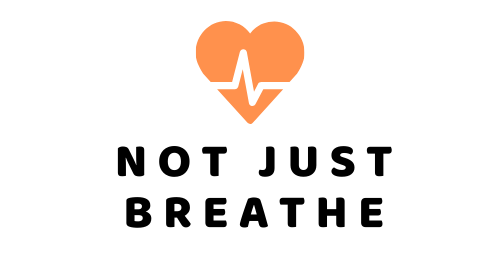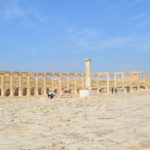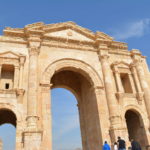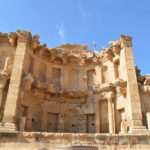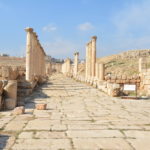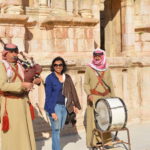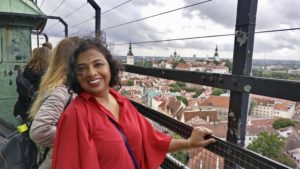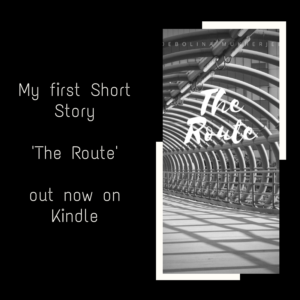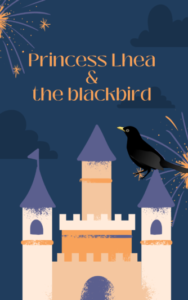Officially known as The Hashemite Kingdom of Jordan, its the most misunderstood country in the Middle East. The first question that I was asked back in India when people came to know about my Jordan trip was “Jordan! Why Jordan of all places? Is it safe?”. Jordan in reality is an island of peace in the now disturbed Middle East. Before the Arab uprising it saw a deluge of tourists, mostly from the US, UK, Europe and Russia. Tourism which contributed almost 50% of the economy is now dwindling at 95% of its former levels. Whilst some of this is partly because of people’s perceived safety concerns, a bigger reason however is the inaccessibility of the nearby countries which were hot tourist destinations once (Syria, Lebanon and Egypt). But for those who want to go away from the touristy circuits, Jordan should be on the top of your list.
Trip Summary:
Airlines: Royal Jordanian (Loved the airlines for its better than average leg space)
Travel date: 12th Dec 2016 – 16th Dec 2016
Tour Agency: Zaid Tours & Travel
Accommodation: Rum Al Waleed hotel in Amman and Tetra Tree hotel in Petra
Trip cost: Approx USD 2500 (inclusive of travel, stay, meals, tips and souvenirs)
Greatest takeaway: Undiluted classes in History and loads of Dolmen products
Day 1 – Jerash
We land in Amman at 0930 local time, greeted by a cold winter morning and a warm Mr Akram from the tour agency. The visa exemption process was as sm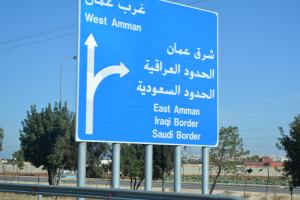 ooth as it can get. He just took our passports to the passport control and once we got our pictures clicked at the table mounted digital camera (I am never too sure if I should be smiling at it and also how long I should be staring at it), our passports were stamped and we were ready for the baggage carousel. Having picked our baggage we quickly proceeded to the bank in the airport to change our dollars to Jordanian Dinars. Mind you, Jordan is so tourist friendly that you can use almost any currency you want but we still preferred to stick to the country’s own (when my sister had visited Jordan, one of her friends tipped the guide at Petra in Dirhams and it was just fine. I was also asked in multiple shops which currency I would like to pay in). But I guess dealing with a country’s currency is all part of the experience, isn’t it? So yes, collected our JDs, paid Mr Akram the balance (we had booked the tour with a 50% advance payment) and out into the sunny Jordanian winter morning. We were greeted by the extremely affable Hasan, who would be our tour driver for the rest of the tour, in his own words “Hi, I am Hasan and I would be your driver for the rest of the tour. That is if you would accept me as your driver”. And with that, and after dropping off Mr Akram on the way, journey back in time began.
ooth as it can get. He just took our passports to the passport control and once we got our pictures clicked at the table mounted digital camera (I am never too sure if I should be smiling at it and also how long I should be staring at it), our passports were stamped and we were ready for the baggage carousel. Having picked our baggage we quickly proceeded to the bank in the airport to change our dollars to Jordanian Dinars. Mind you, Jordan is so tourist friendly that you can use almost any currency you want but we still preferred to stick to the country’s own (when my sister had visited Jordan, one of her friends tipped the guide at Petra in Dirhams and it was just fine. I was also asked in multiple shops which currency I would like to pay in). But I guess dealing with a country’s currency is all part of the experience, isn’t it? So yes, collected our JDs, paid Mr Akram the balance (we had booked the tour with a 50% advance payment) and out into the sunny Jordanian winter morning. We were greeted by the extremely affable Hasan, who would be our tour driver for the rest of the tour, in his own words “Hi, I am Hasan and I would be your driver for the rest of the tour. That is if you would accept me as your driver”. And with that, and after dropping off Mr Akram on the way, journey back in time began.
We headed straight from the airport, further north to the ancient town of Jerash, roughly 50 kms north of Amman, the capital city. With very little shut eye the previous night, what with an early flight and a flying time of only about 3 hours where for most part you sit with the food tray almost jutting into your abdomen its contents unappealing-ly staring at you, I anticipated it to be a tiring day ahead. Boy, I was so wrong. The moment we go into the ancient Roman ruins of Jerash, I felt incredibly charged up. The crisp bite of the chill, the beautiful sunny skyline and the limestone colored mega structures, all in a single line of sight. Jerash boasts of a history of 6,500 years, and flourished during the Roman era when the Roman General Pompey first set foot in 63 BC. It is one of the best preserved Roman sites outside of Italy and one of the most prominent of the 18 Roman sites of the Middle East-Levant region, including the 10 cities which formed the Decapolis League. Once you reach the site, it is advisable to take a guide along with you. The most important sites are as below and all are on the path from when you enter the site through the North Gate to the South Gate and hence difficult to miss.
- Hadrian’s Arch: built in 129AD, this marks the ancient city’s boundaries.
- Hippodrome: a restored Roman-era stadium. This was the smallest of the two arenas in the Roman Empire.
- Forum (Oval Plaza): this is the main attraction. Bordered by 160 Ionic columns, it literally cannot be missed
- The Cardo: a 600m (1,968ft) colonnaded street running the length of the city
- Temple of Artemis: impressive temple ruins dedicated to the Ancient Greek deity
- Agora: once the city’s main food market positioned around a central fountain
- Nymphaeum: an ornate public fountain decorated with lion heads and dedicated to nymphs
- South Theatre: the larger of the two theatres, this can seat up to 3,000 people. The site is still used for concerts, performances
- Jerash Archaeological Museum: houses a collection of artefacts such as coins, statues and sarcophagi found during the numerous excavations
Much of Jerash, and the Middle East was destroyed by a major earthquake in 749 AD. For any music buffs reading this post, Jerash also hosts the annual Jerash Festival of Culture and Arts held in July-August, a month long cultural event organised in the back drop of the Roman ruins.
We were back at our hotel in Amman by 02.30 pm. Hasan had wanted us to have a traditional lunch on our way back, but we were too tired to really appreciate a civil dining experience and hence decided to just get dumped at our hotel. After freshening up a little we walked down to Wakalat street, which is the main shopping area in Amman, and munched on some shawarma rolls and fries. We also stopped by at the Galleria Mall to soak in some of the mall culture, which was nothing atypical really. Most of the shops were ones that you would get anywhere in Europe or US barring a few Middle Eastern brands. And then with an early dinner at our hotel we called it a day.
Day 2 – Bethany, Mt Nebo, Madaba, Dead Sea
Today we drove out of Amman to cover Bethany, the Dead Sea, Mt. Nebo, Madaba and finally reach Petra for the night stay.
We arrived at Bethany beyond the Jordan at around 9.30 am, the historical site where Jesus was baptized around 2000 years ago. Upon reaching the site entrance we got into a waiting bus which took us, along with a guide, to the main site of Baptism. This is a highly protected area as the river serves as the border between Jordan and Israel. You will see a considerable presence of military on both sides. When you are at the river you can see the tourists in Jericho, Palestine (or Israel depending on whose side you are). If you are an overtly friendly person you can certainly wave your hand at the tourists and ask after Prime Minister Netanyahu! Anyways. Pope John Paul II had visited Bethany in 2000 and declared it one of the Holy sites. You will often see pilgrims (mainly Russian) wearing a white gown and performing the customary three dip routine, one each for the Father, the Son and the Holy Spirit. You will also be able to see the Greek Orthodox church dedicated to John the Baptist. Bethany beyond the Jordan is not just a World Heritage Site, but also a site rapt with references in the Bible including the story of Elijah who is said to have crossed the Jordan River here and was then taken up to heaven in a chariot of fire.
We then moved to have a quick look at the Dead Sea. I was not planning on getting down into the sea as it was a particularly cold and wet day and I was already battling a blocked nose, hence we (my husband chose not to choose) chose to just take a quick detour to the Dead Sea. If you wish to spend some time floating in the sea, please ask the tour operator to take you to one of the private beaches where you can enjoy atleast a couple of hours at the sea. I have reserved my true Dead Sea experience for a trip to Israel, however missing the visit to the Dead Sea in Jordan would mean that you have missed marking yourself at the ‘Official Lowest point on Earth’ and hence is almost blasphemy in my over greedy traveler’s mind. And for all those sceptics who have shrugged at the magical powers of Dead Sea Minerals (me inclusive), your only test is dipping just your hand in that water. The oily residue left on your hand will make you wonder if it was really water that you just touched.
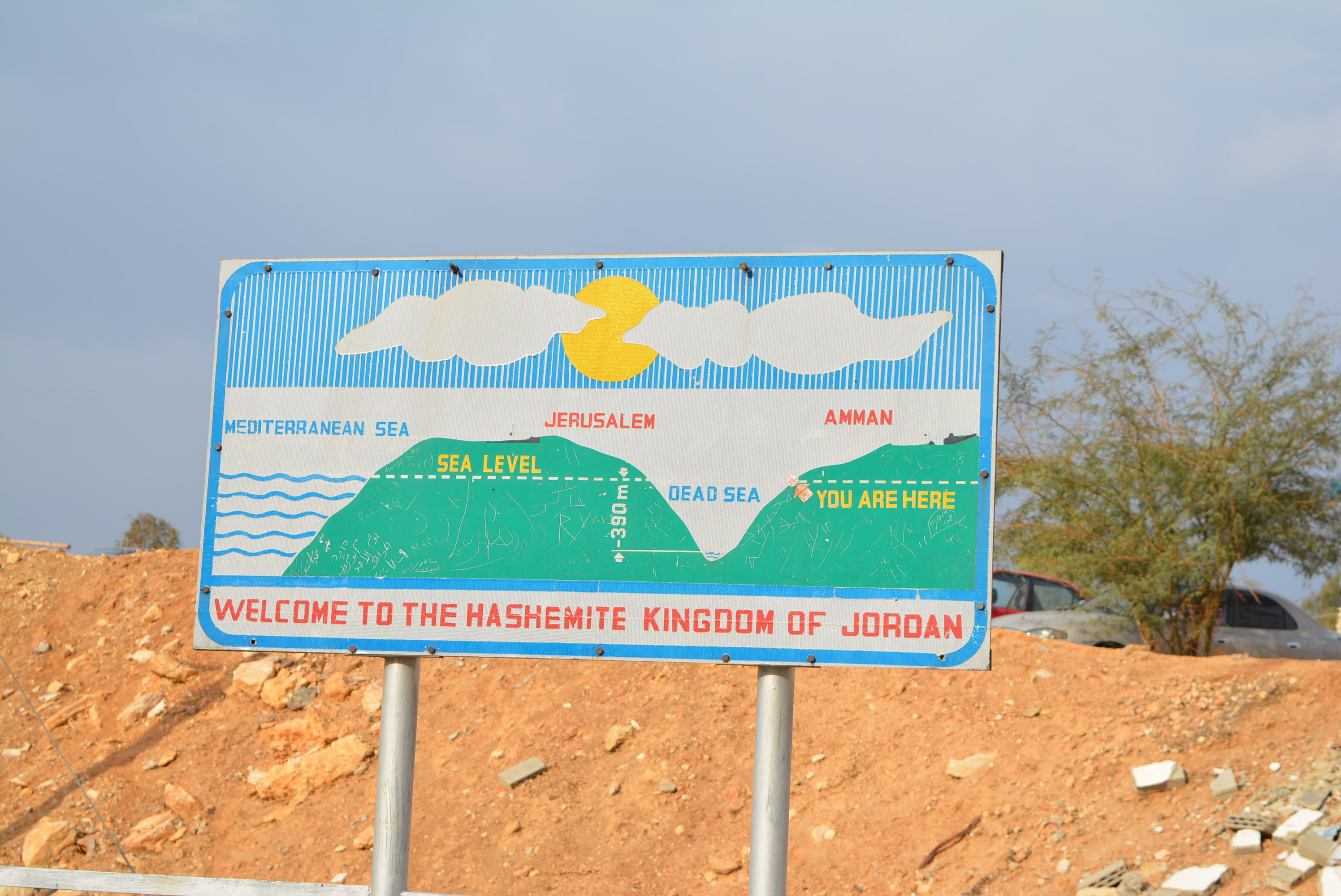
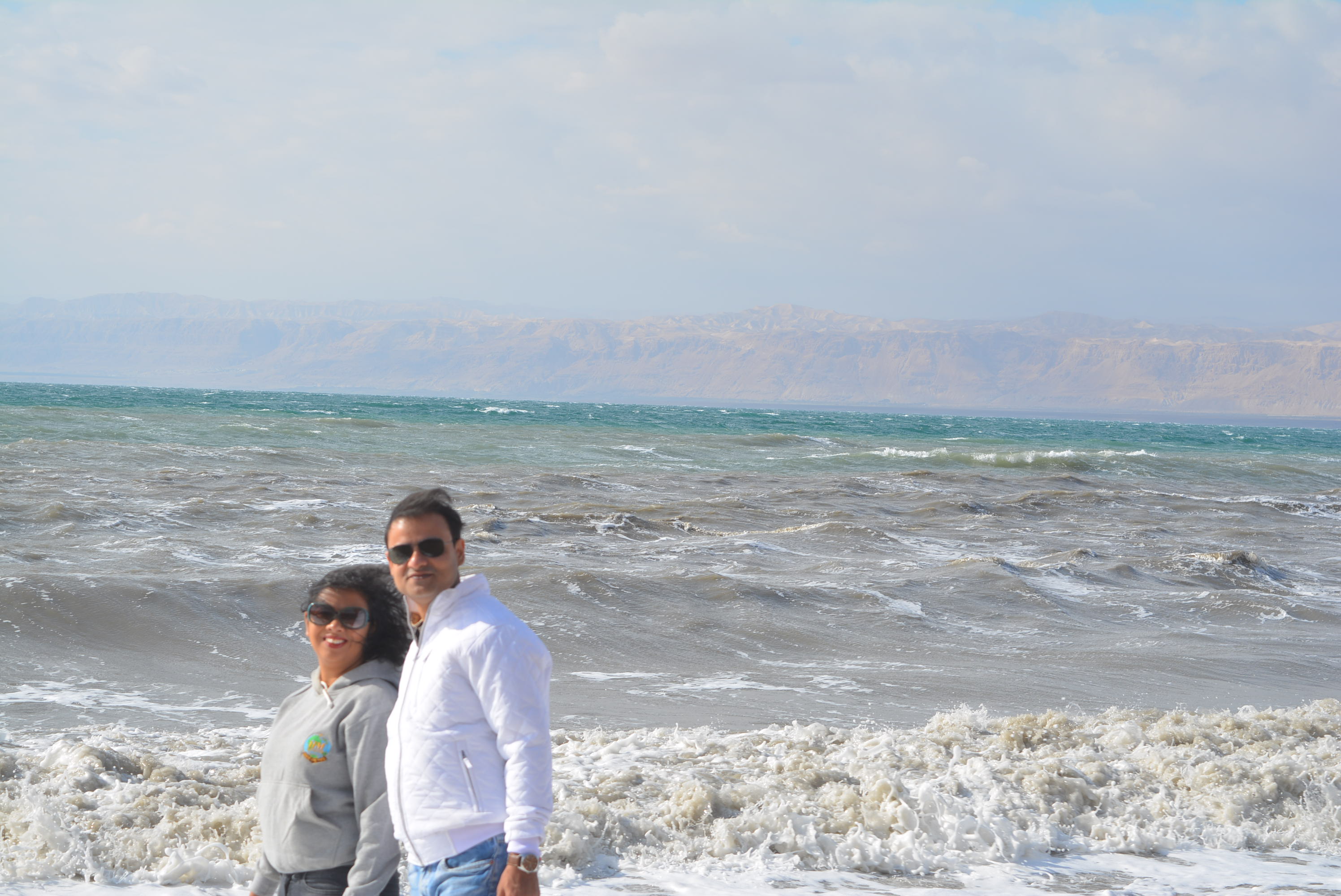
With Dead Sea oil on our hands and a feet full of Dead Sea salts we continued our journey further south towards Mt. Nebo, the site where Moses (or Prophet Musa in Islam) was shown the Promised Land just before he died. There is a church up there built as a Memorial to Moses. The land around is referred to Wadi Musa or the Valley of Moses. However donot confuse this with the actual Wadi Musa which is the district that Petra belongs to. You will be able to see the Olive tree planted by Pope John Paul II during his visit of the Holy Land in 2000, a symbol of peace (maybe our world leaders too should try their hands at Olive trees). There are multiple olive trees dotting the area adjoining the church and if you visit around October you may be able to see the olives as the plucking season ends by October. You will also be able to see the sculpture by an Italian artist representing Moses’ staff. For those uninitiated to Biblical mythology, Moses was commanded to throw down his staff, and when he did so, it had turned into a snake. God then told Moses to grab the snake by the tail, and when he did so the snake changed back into the staff. This miracle, along with two others, was used to convince the Jews that Moses is the legitimate messenger of God. The same symbol is also used by Hippocrates as the symbol of medicine although the origin of this is more likely linked to the Greek mythology of the staff of Asclepius, the son of Apollo. Pon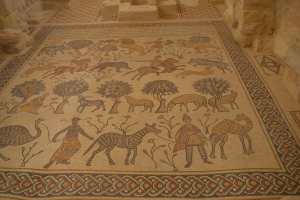 dering slightly at this stage, I almost feel as if the entire world is just one great history, only with different names and slightly different interpretations. The site also houses the Memorial church of Moses, a small church which was closed for restoration until recently. There are some fine relics of mosaic in the church more of which you will see in Madaba. Before I move on to take you to Madaba there is an interesting piece of information which I almost missed. When you travel from the Dead Sea to Mt. Nebo, there is a stretch of road downhill where you can witness the ‘Magnetic Hill’ phenomenon. Your car will roll uphill defying all rules of gravity. There are no tourist markings there and Hasan claims to have discovered it on his own.
dering slightly at this stage, I almost feel as if the entire world is just one great history, only with different names and slightly different interpretations. The site also houses the Memorial church of Moses, a small church which was closed for restoration until recently. There are some fine relics of mosaic in the church more of which you will see in Madaba. Before I move on to take you to Madaba there is an interesting piece of information which I almost missed. When you travel from the Dead Sea to Mt. Nebo, there is a stretch of road downhill where you can witness the ‘Magnetic Hill’ phenomenon. Your car will roll uphill defying all rules of gravity. There are no tourist markings there and Hasan claims to have discovered it on his own.
Then you descend to Madaba and before you hit the church at Madaba to see the mosaic map of the Holy Land, do stop by at the Mosaic factory to have a first hand view of how painstakingly these mosaic paintings are put together, even in this age of tool sophistication. Once at the church of Madaba, there isn’t a lot to see. The church itself is quite small and was built in 1896 to mainly protect the Byzantine era church housing the famous mosaic map.
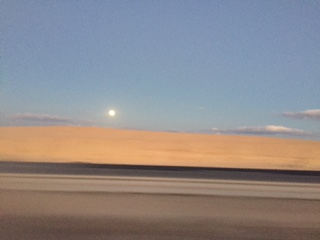

Day 3 – Petra
It was a rather gloomy morning in Petra. There was a forecast of rain and snow in the afternoon which would heavily impede our ability to visit the site. I had woken up at about 5:00 am to see a thick pall of fog from the window.
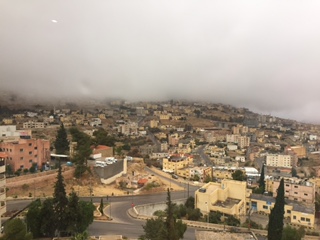
We were supposed to be ready by 7.30 am at the reception, so we got up by 6:00 am and started getting ready. When we arrived at the reception at 8:15 am Hasan was already there waiting for us. Throughout the trip he had ensured that he would arrive 15 mins before the scheduled time and was never late. I could tell by his face there the news wasn’t very encouraging. The tourist centre at Petra hadn’t started selling any tickets in the morning. The very structure of the entrance to the Treasury makes it quite dangerous in the rains, for the risk of flash floods. In 1963, 22 French tourists were washed away due to the flash floods and since then the centre takes extra caution in allowing tourists in. Upon reaching the site, the ticket sales had begun but there was no guarantee that the visitors would be able to walk up till the Treasury. But with the tickets in our pocket and a guide in tow, we started our walk towards the 2000 years old structure, braving a chilly wind, a dark skyline and a risk of a sudden downpour and, at the cost of being heinously melodramatic, death.
The Siq is a narrow gorge about 1.2 kms long leading upto the magnificent Treasury. As you walk through the Siq you almost feel as if the doors to this ancient city are slowly opening up for you, and that any misstep that you take can actually forever close these doors. I don’t think that I will do enough justice in this blog if I were to write about the entire experience of walking down the Siq and finally laying my eyes on the Treasury so I will reserve it for a blog entirely on Petra and just stick to a quick summary here. Your tour guide is paid to be with you till the Treasury but will most certainly walk upto the point from where you start your climb towards the Monastery. There is a cosy tea shop once you walk down past the Treasury towards the Monastery where you can relax with a cup of wonderfully brewed tea or ‘shay’ in Arabic and some warm hospitality. We were in the middle of a rainy winter morning, but on a summer day I wouldn’t know if these will be as welcoming. All the way in Petra you will be asked to ride a donkey upto to the Monastery. Please just bluntly say no to them (Hasan had strictly instructed us against showing even a tiny sign of interest as then you are at a risk of being dogged by a donkey and its rider all through your Petra experience). Donkey rides are not authorised by the govt and is severely discouraged by the authorities. For those who cannot walk the entire distance (from the entrance to the Treasury) there are horses and horse drawn carriages available for hire.
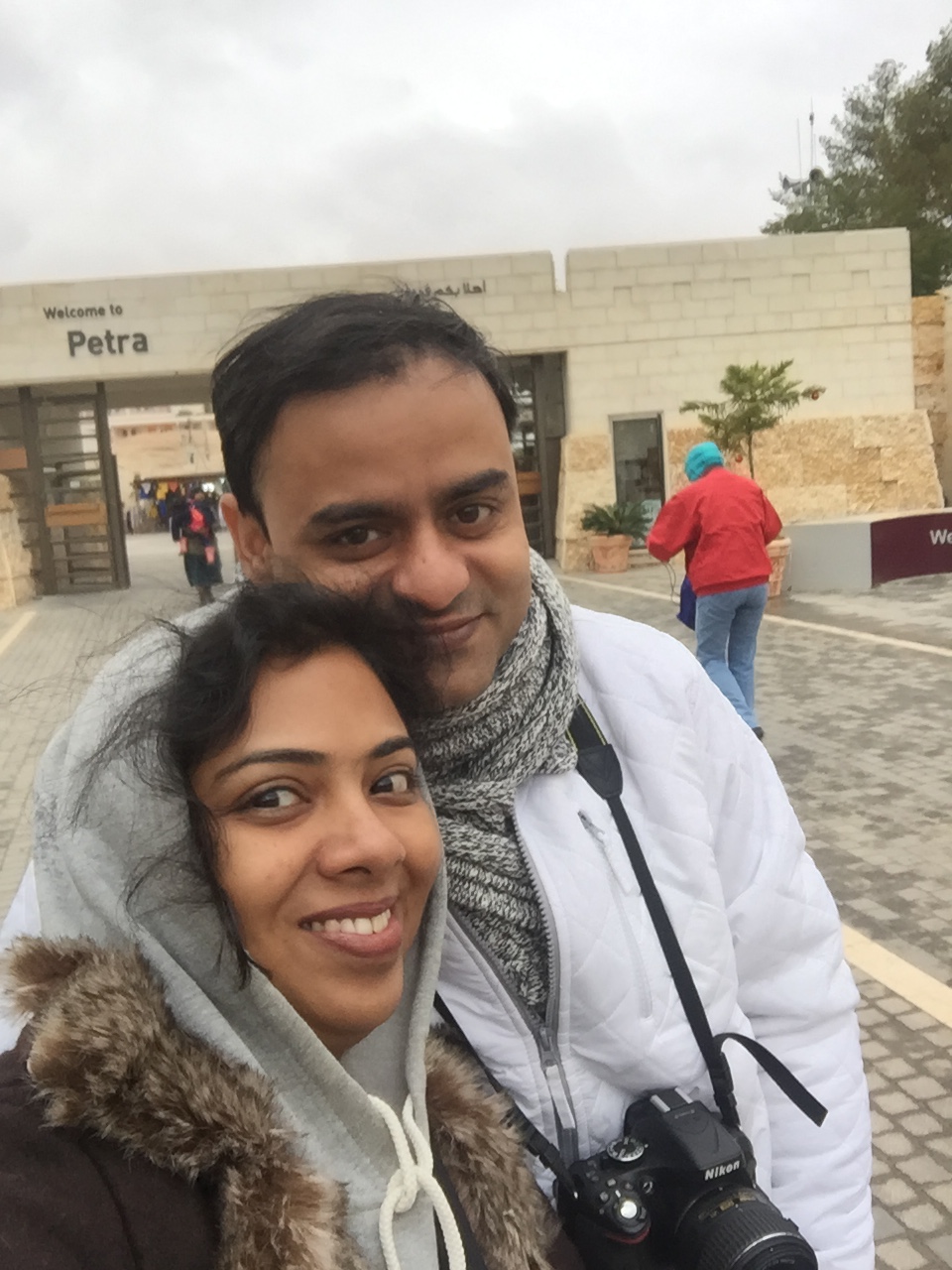
After a quick lunch at one of Hasan’s favorite falafel joints, we headed to Little Petra. It is an extremely miniature version of Petra and hardly sees any tourists. Not having visited the Monastery due to the wet weather, we had some time on us and decided to pay Little Petra a visit. We spent about 30 mins there and then rode back to our hotel. It had already started to drizzle then and by the time we reached the hotel it starting pouring. Post an early dinner of enormous portions of Maqluba along with lentil soup and pita and hummus we retired to bed by around 9pm to start at 8 am the next morrow.
Day 4 – Wadi Rum
We left Petra in the morning for Wadi Rum. If Hasan were to have his way, he would have wanted us to stay at Wadi Rum for a night but we already had our tickets booked out of Jordan for the next night. Wadi Rum, nicknamed The Valley of the Moon, is a landscape like no other on earth. No photos of the place can do justice to its real beauty. No wonder it is Hasan’s top place in Jordan, ranked even higher than Petra. Traveling in an open jeep across the sand dunes and the rocks jutting out from the sides, you are certain to feel like you are on an interplanetary journey. No wonder Ridley Scott substituted these sand dunes for Martian territory! You will spend about an hour to hour and a half in Wadi Rum, and can choose to take a camel ride across the desert. And if you really want to thoroughly soak in the desert experience, camp at one of the many night camps available on site and enjoy some true Bedouin hospitality. Most of the people you see here are Bedouins many of whose ancestors would have fought alongside T.E Lawrence (famously known as the Lawrence of Arabia) against the Ottoman attack at this very place. So you may get some free lessons on First World war Arab history too.
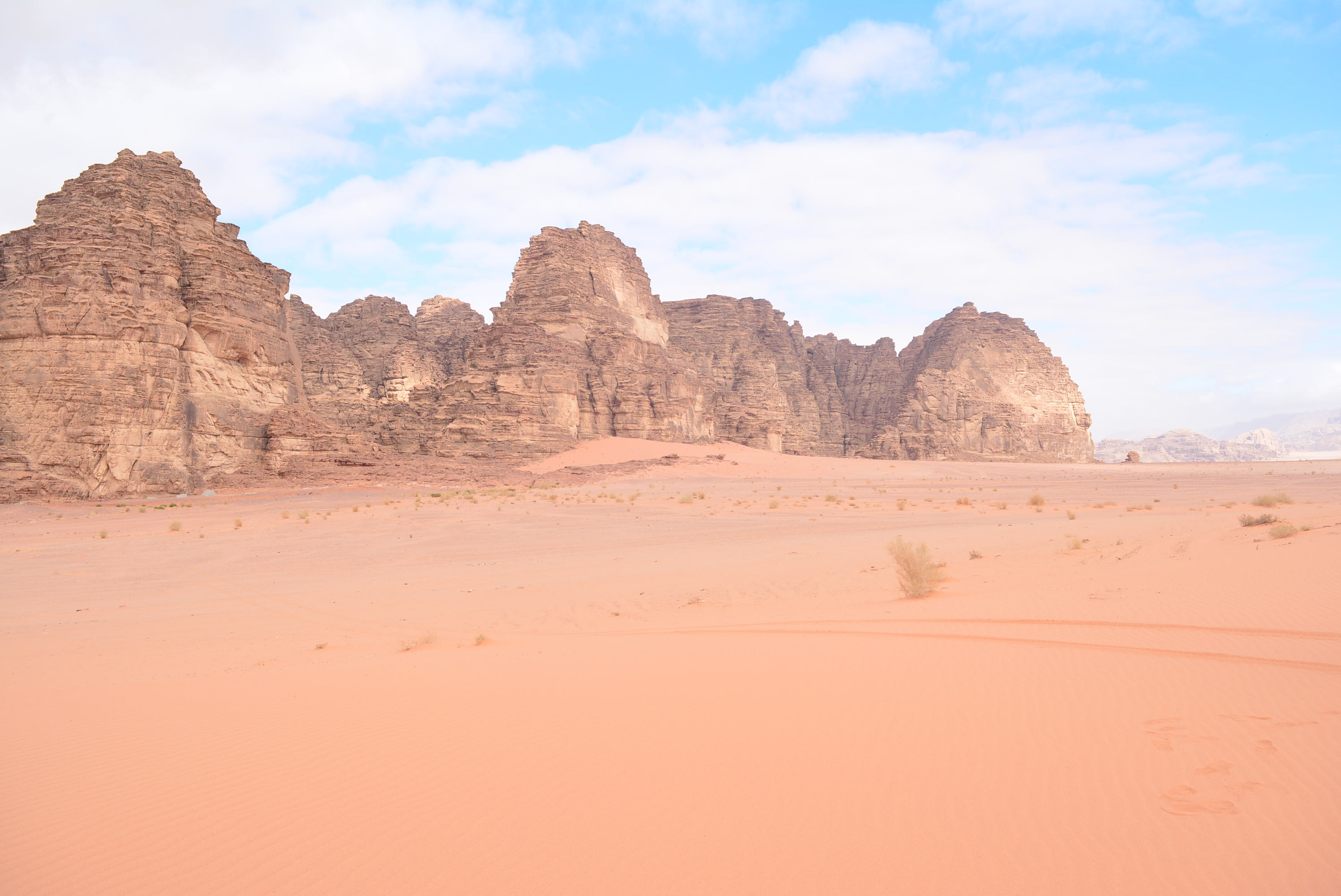
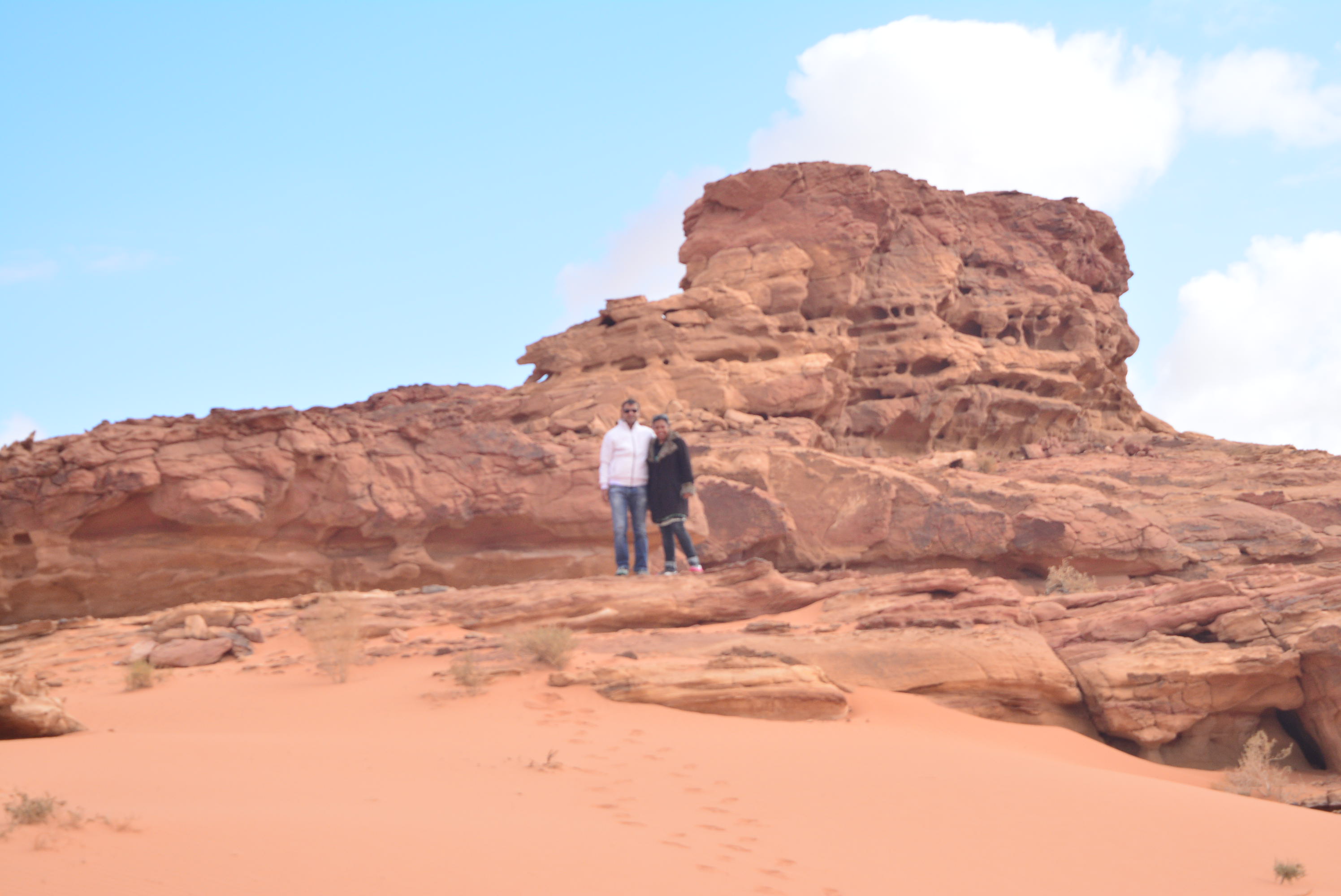
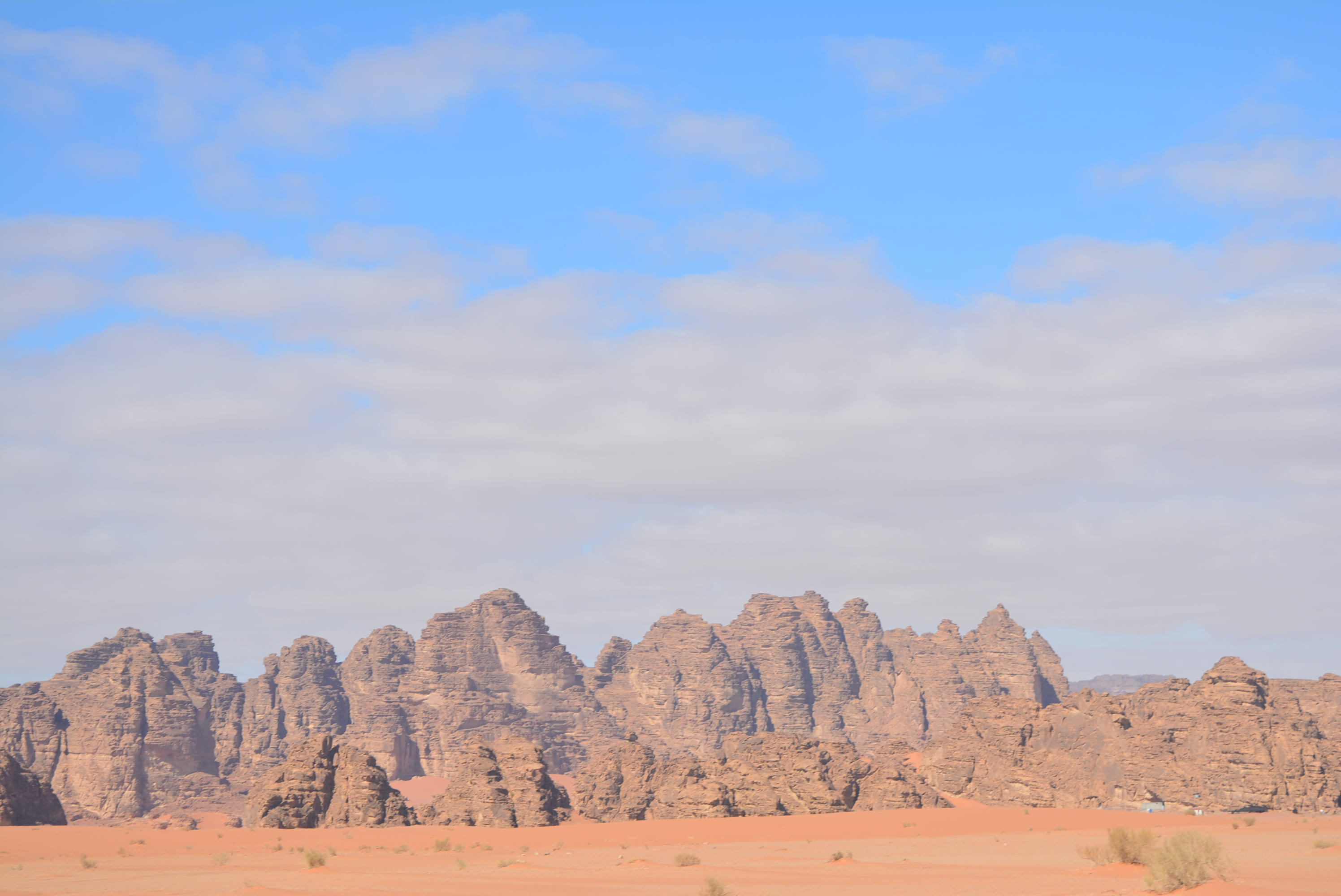
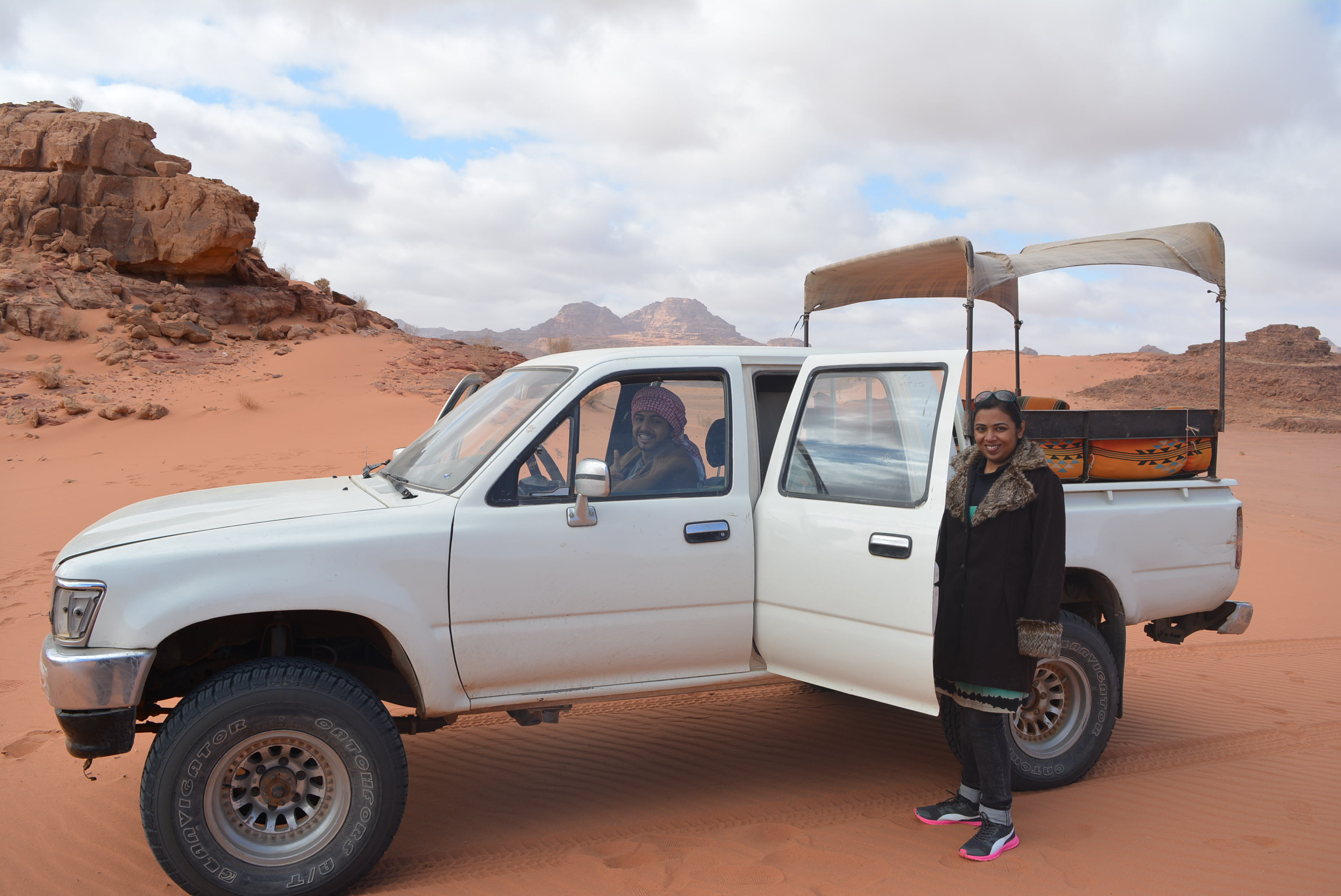

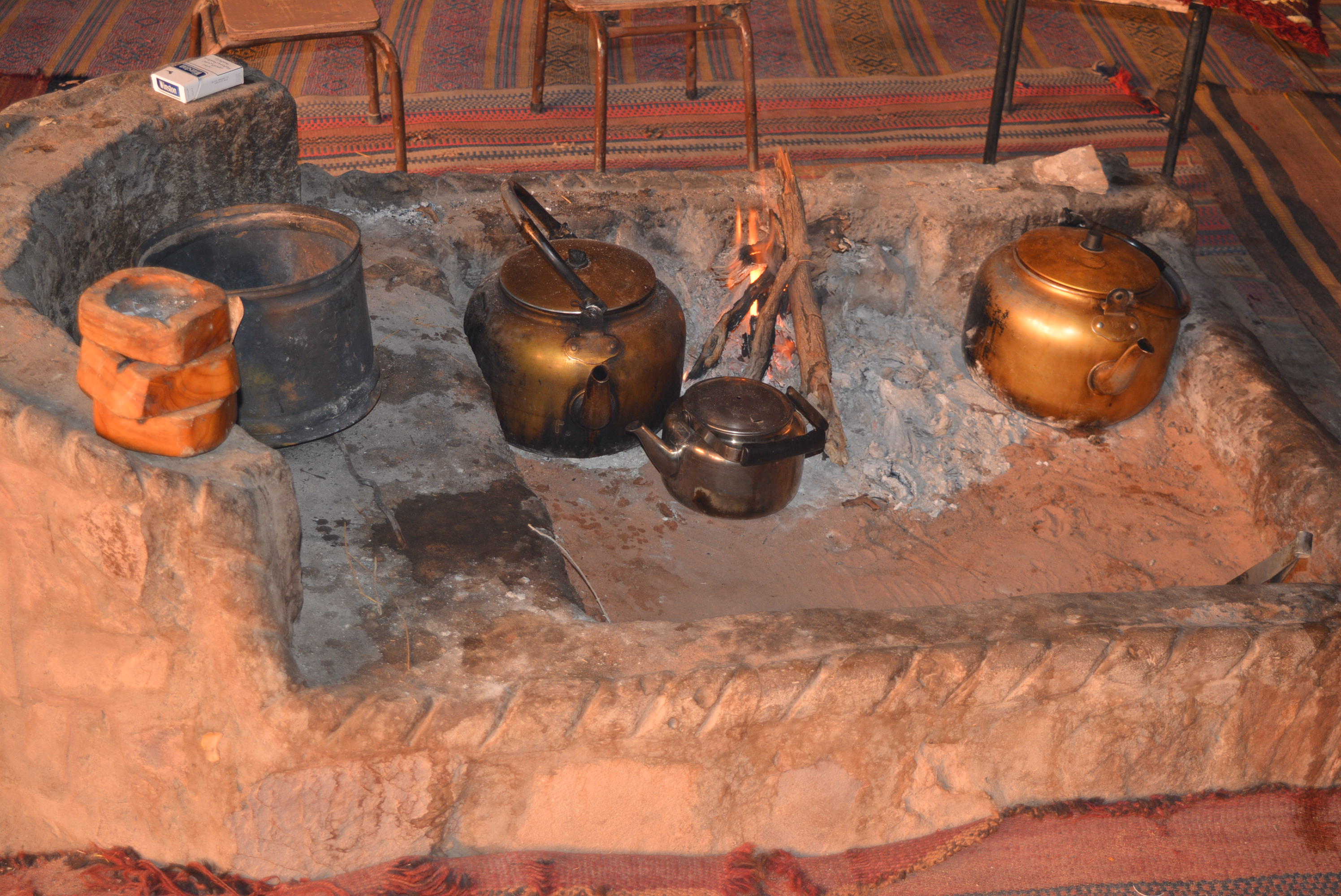
We now drove towards Amman, for our final night stay in Jordan before we flew out the next morning. Just before we entered Amman, we stopped at the Black Iris to hoard on some more Dolmen dead sea products and a couple more souvenirs. This is one of the best bargain shops near Amman and I would highly recommend this for a quick shopping sojourn. Upon entering Amman, Hasan took us on a quick panoramic tour of the city covering the Amman Citadel, Roman amphitheatre and Amman downtown. Being a Thursday evening, start of the weekend, the roads were pretty jammed. It was already past 4pm and hence we couldn’t enter the citadel and the museum was also closed. If you are able to make it into the Jordan Museum do visit it for the Dead Sea scrolls. It is closed on Tuesdays and Fridays and is open rest of the week from 10 am to 2 pm only.
At 5pm, soaked in the experience of Jordan, Hasan treated us to some great Shawarma rolls and Falafel at one of his favorite restaurants in Amman. That was his way of saying good bye and with a heavy heart we checked in one last time at our hotel in Amman. There was a wedding
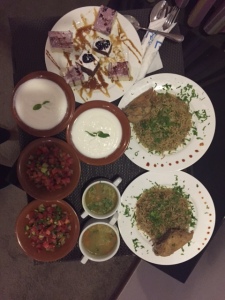 that night at the hotel and hence the dining room had been booked out, so the staff was more than happy to serve our dinner in the room. With temperatures nearing zero, we were more than happy to sit back in our cosy room and reminiscence on the trip that was, while still tasting a bit of Jordan. We had an early morning flight to Dubai and Hasan was right on time to pick us up one last time. The flight was a Boeing 787 with great leg space and quite a few empty seats so I almost dozed off after take off (I am usually a non sleeper on planes). But when I open ed my eyes and looked up I saw something like a sky full of stars. Thankfully I realised much before I could panic, that it was Boeing’s or perhaps Royal Jordanian’s awry idea of an added zing to the aircraft, by painting the ceiling of the place with luminescent stars. I for sure wouldn’t want to wake up in an aeroplane and see a sky full of stars over my head. Jeepers creepers ! Sky full of stars or not, we definitely came back with a head full of memories and a bag full of souvenirs.
that night at the hotel and hence the dining room had been booked out, so the staff was more than happy to serve our dinner in the room. With temperatures nearing zero, we were more than happy to sit back in our cosy room and reminiscence on the trip that was, while still tasting a bit of Jordan. We had an early morning flight to Dubai and Hasan was right on time to pick us up one last time. The flight was a Boeing 787 with great leg space and quite a few empty seats so I almost dozed off after take off (I am usually a non sleeper on planes). But when I open ed my eyes and looked up I saw something like a sky full of stars. Thankfully I realised much before I could panic, that it was Boeing’s or perhaps Royal Jordanian’s awry idea of an added zing to the aircraft, by painting the ceiling of the place with luminescent stars. I for sure wouldn’t want to wake up in an aeroplane and see a sky full of stars over my head. Jeepers creepers ! Sky full of stars or not, we definitely came back with a head full of memories and a bag full of souvenirs.
If you have visited Jordan and would like to add anything, please leave a comment. If you haven’t visited Jordan and still want to comment, just write away anyways !
Till we meet again, happy journeys !

